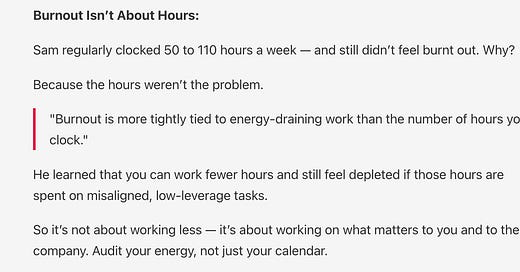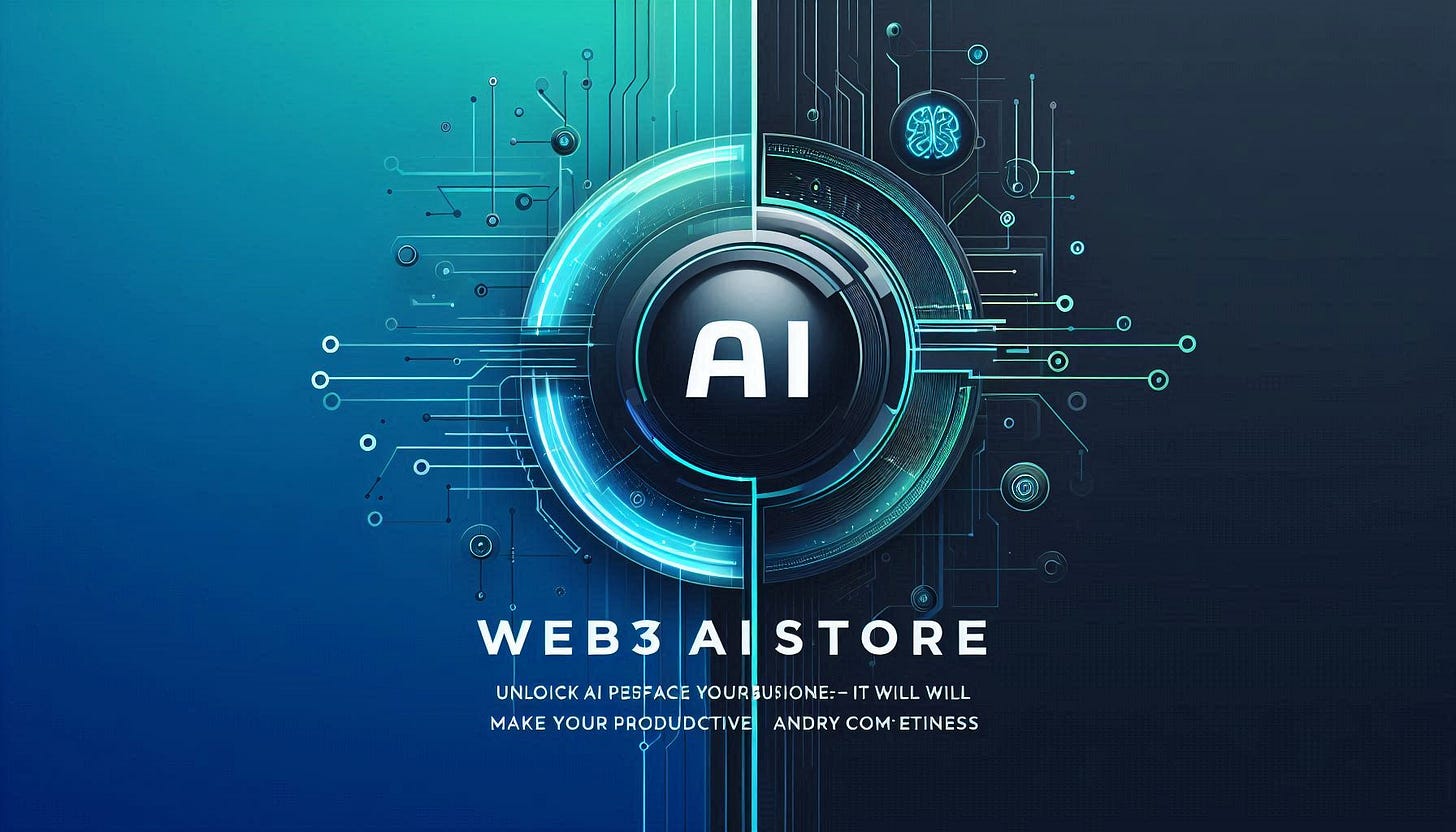Startup burnout is real — here’s how to reset before it takes you down. | VC & Startup Jobs.
The next distribution shift is here, framework to decide when and when not fight your competitors & cap table template download.
👋 Hey, Sahil here! Welcome to this bi-weekly venture curator newsletter, where we dive into the world of startups, growth, product building, and venture capital. In today’s newsletter -
Deep Dive: Startup burnout is real — here’s how to reset before it takes you down.
Quick Dive:
The next distribution shift is here — what founders need to know.
Market command matrix: when (and when not) to fight your competitors.
Building a Cap Table as a founder: template to download.
Major News: Mira Murati’s startup raises $2B, Meta tried to buy Ilya Sutskever’s $32B startup, Nvidia’s $100M bets, Meta in talks to hire ex-GitHub CEO, & Microsoft to axe ‘thousands’ of its sales staff.
20+ VC & Startups job opportunities.
INVESTMENT OPPORTUNITY FOR YOU
🤝 This $6B+ Team just Secured Rights to the Highest-Grossing Characters in History—Invest by Tomorrow!
Quick question: What happens when you combine:
100+ trademark victories for characters like Cinderella & Snow White
Patented AR technology
A $350B licensed merchandise market
A team with over $6 billion in licensing deals
Answer: You get Elf Labs, the company building AI-powered 3D worlds where kids can have real-time conversations with their Rapunzel doll or play hide-and-seek with Cinderella–right in their living room!
They're reshaping the $2T entertainment market, and for a limited time, you can invest.
The Catch? The round closes tomorrow, and they're about to be sold out!
Learn how to invest in Elf Labs here →
PARTNERSHIP WITH US
Get your product in front of over 95,000+ audience - Our newsletter is read by thousands of tech professionals, founders, investors and managers worldwide. Get in touch today.
📜 TODAY’S DEEP DIVE
Startup burnout is real — here’s how to reset before it takes you down.
I spoke with a founder recently. He’s been building full-time for over two years. And he’s not the kind of person who complains easily.
But this time, he opened up.
“I feel like I’m stuck in something I can’t leave. I’m exhausted. I still believe in the idea, but I don’t feel anything anymore. Just pressure.”
He wasn’t looking for advice. He just needed someone to get it.
And I did. Because I’ve been there.
Most founders have. We just don’t say it out loud.
We don’t talk enough about the emotional cost
On the outside, startup life looks like product launches, fundraising wins, and hiring announcements. Scroll through your feed and you’ll see a highlight reel.
But behind the scenes? It’s often a very different story.
The launch underperforms
The team doesn’t fully buy in
The burn rate keeps creeping up
The motivation starts slipping
It builds slowly, but then it hits hard: That quiet feeling of isolation. Of wondering if you're the only one struggling.
Why innovation feels like loneliness
The deeper truth is this: If you’re building something truly new, you will feel misunderstood.
You’re the one carrying the vision. You’re asking others to see a future that doesn’t exist yet. And when no one fully gets it, you start to question your judgment.
Am I wrong?
Is this just a bad idea?
Should I quit?
This is what makes the middle of the journey so hard. Being early feels exactly like being wrong until it finally clicks.
Start with your body
When the pressure builds, the first thing to go is your physical health.
Skipping meals
Sleeping poorly
No sunlight, no movement
Doomscrolling late into the night
It seems like a small thing, just a few habits slipping. But over time, this turns into a fog that affects everything: your thinking, your decisions, your ability to lead.
If you’re feeling that way, don’t overthink it. Start small. Take 30 minutes today.
Eat a real meal without multitasking. Go for a walk. Sit in silence. That’s not “taking a break.” That’s maintenance. It’s how you stay in the game.
You don’t need a big escape, just a pause
One of the most valuable habits I’ve seen from high-performing founders is strategic distance.
Tara Viswanathan (founder of Rupa Health) takes solo retreats every quarter. No team, no partner, no notifications. Just space to think.
You don’t need to disappear to a cabin in the woods. But you do need to build in space to zoom out.
A long weekend. A solo day each month. Even a few screen-free hours on Sunday to reset.
If you never step back, you’ll always feel like the house is on fire, even if it isn’t.
Don’t wait too long to ask for help
We’re finally in a world where coaching and therapy aren’t seen as weaknesses. They’re tools.
The best founders I know invest in support. Not because they’re fragile. Because they know this journey is brutal without a sounding board.
Whether it’s a coach, a therapist, or a mentor, it changes everything when you have someone helping you zoom out, reflect, and grow.
And if money is tight, don’t overcomplicate it. Reach out to other founders who’ve been through it. You’d be surprised how many are willing to talk if you’re honest about what you’re struggling with.
You are not alone in this
There’s no version of building something real that doesn’t come with moments of despair. The difference between those who make it and those who burn out isn’t grit, it’s support.
So here’s what I’ll leave you with:
Check in on your basics: food, sleep, movement
Build space to think - quarterly, monthly, weekly
Get help sooner rather than later, even if it’s just a conversation
Talk to founders who’ve seen the same darkness
Because if you’re here, if you’re still trying, if the fire hasn’t gone out completely—
You’re not done.
And the world still needs what you’re building.
Also, burnout sometimes happens due to a very overlooked reason we shared in our previous articles..
INVESTMENT OPPORTUNITY FOR YOU
🤖 AI That Works—Why Web3AIstore Is Worth Your Attention
While most companies struggle to implement AI, Web3AIstore streamlines the process.
Web3AIstore is a customizable AI platform featuring 5,500+ specialised tools designed for SMBs to automate tasks, boost efficiency, and scale quickly, without writing code. Self-learning, self-improving models integrate domain-specific knowledge to deliver smarter, more personalised results over time.
What’s working:
✔️ 1,000+ active users with 25% QoQ growth
✔️ $100K+ early revenue, real-world use cases
✔️ 2025 AI Solutions Provider of the Year winner
Newly launched: AI-powered marketing automation—enabling SMBs to build sales funnels and omnichannel campaigns without a marketing team. No training, no complexity—just results.
Now raising on StartEngine to expand access and deliver smarter AI for everyday business.
Ask questions to our interactive tool for more details →
📃 QUICK DIVES
1. The next distribution shift is here — what founders need to know.
We’re living through a historic technology shift with AI.
But here’s the catch: while product-building has changed dramatically in the last two years, distribution hasn’t kept up.
Brian Balfour recently published one of the most important essays I’ve read, and I couldn’t stop thinking about it. So I’m summarising key ideas here, plus adding a few takeaways and warnings for founders, builders, and operators.
The core problem
We’re building AI-powered products in 2025 using the same playbooks from 2015.
SEO traffic is collapsing. Social platforms are walled gardens. Discovery is dying.
The old growth channels (Google, Facebook, LinkedIn) are no longer reliable. And the new ones haven’t fully emerged. That’s the dangerous gap we’re sitting in.
“AI is actively destroying the distribution channels we’ve relied on for decades.”
The brutal platform pattern
Every major platform follows the same 3-step cycle:

Identify the moat: What makes the platform defensible? (For Facebook, it was the social graph. For Google, it was search data. For Apple, it was the app ecosystem.)
Open the gates: Make it easy for developers/creators to build on top. Offer viral mechanics, generous APIs, and monetisation splits.
Close and monetise: Once escape velocity is reached, the platform tightens control. Growth tools disappear. Fees rise. Organic reach vanishes.
This isn’t theory. It’s a repeating, predictable pattern:
Facebook opened up APIs, then killed them and taxed app revenue
Apple let anyone build on the App Store, then absorbed top apps and enforced a 30% cut
Google gave free SEO traffic, then filled SERPs with ads and scraped answers
If you're building on a platform and not preparing for this cycle, you're walking straight into a trap.
So where’s the next platform?
Brian believes the next distribution platform will be ChatGPT (OpenAI) and that we’re already in Step 2: Opening the gates.
Here’s why:
ChatGPT has 700M+ users and is showing elite retention
OpenAI is actively launching connectors (HubSpot, Box, GitHub)
They're hiring a dedicated Agent Platform team
They’re laying the foundation to become the new interface, not just an app, but an OS layer for work
Their moat? Context + memory.
Not just answering prompts, but remembering who you are, what you’ve done, what you want next.
Once you feed your data, workflows, and habits into their ecosystem… switching becomes extremely hard.
“OpenAI isn’t just building a product. They’re building the next App Store, search engine, and operating system powered by your memory.”
Past platform shifts played out slowly:
Google took nearly a decade to close
Facebook took ~5 years
LinkedIn closed the gate in just 3
With AI? The timeline might be even shorter. Developers are already racing to integrate. Users are building muscle memory. The window to get early advantages is now.
If you’re late, you’ll still have to integrate, but you’ll miss the upside and enter just in time for the platform taxes.
What should you do?
Integrate early, but not blindly
Ride the wave to acquire users, get visibility, and stay competitive. But don’t hand over your entire value chain.Build a moat inside your product
Own your data. Build community. Create differentiation that’s not tied to OpenAI’s API.Assume the gate will close
Have a plan for when distribution gets taxed, APIs get limited, or ChatGPT launches a feature that replaces your app.Diversify your channels
Use the distribution while it lasts, but don't depend on it. Keep building your brand, email list, or independent acquisition loops.
“Use ChatGPT’s distribution, but don’t let ChatGPT become your product.”
This is not a drill
If you’re building SaaS, AI tools, or content products, this shift affects you now, whether you realise it or not.
The winners of the AI era won’t just build with better tech. They’ll see the distribution shift coming and position themselves before the herd arrives.
Every platform looks friendly in the beginning. That’s by design.
The smartest founders? They partner with the platform, profit during the “open” phase, and prepare for the “closed” one.
Don’t be caught off guard. The next great distribution shift isn’t coming. It’s here.
Highly recommend to read this detailed article here.
2. Market command matrix: when (and when not) to fight your competitors.
Patrick Campbell sold his startup, Profitwell, for $200 million last year — and it was entirely bootstrapped.
Since then, he’s started sharing a lot of primary research he’s commissioned into topics where there isn’t a lot of ground truth data on. Most recently, he shared his competitive research playbook and shared this framework — the market command matrix:
The y-axis represents how much of a competitor’s resources they’re piling into your market, and the x-axis represents how aware customers in your market are of the competitor.
The big text in each quadrant is what you should do in response. While the placements on the matrix aren’t exact (for example, a “big VC bet” could have dramatically more or less mindshare depending on what stage they’re in), Patrick’s recommendations are good.
Note that he only recommends you take action against the two quadrants on the right — the competitors who your target and/or existing customers are likely to be aware of.
Another note: “all-out attack” may mean exploring partnerships when you both have leverage in different parts of the market — it doesn’t mean burning all your money on paid ads.
He also includes free playbooks on how to handle competitors in each quadrant — the full article is worth a read.
3. Building Cap Table as a founder: template to download.
A cap table, or capitalisation table, is a chart typically used by startups to show ownership stakes in the business. It lists your company's securities (i.e., stock, options, warrants, etc.), how much investors paid for them, and each investor's percentage of ownership in the company.
You can obtain a stockholder ledger from your lawyer, which lists all stockholders and shows how many shares or options they hold. However, I don't consider this document a comprehensive cap table. In this, I am sharing a cap table template that is used by various leading VC firms’ partners.
The basic outlines of this cap table are:
It shows all the major stockholders of the company listed on the left side. It also shows the major option holders and buckets of option holders
It shows all of the classes of stock and how much was paid for them across the top of the columns
For each investor, you show how much of each class was bought and how many shares of that class they own as a result
You total up the cost and shares and then calculate ownerships on a fully diluted basis (which means you include the options, whether issued or non-issued or vested or non-vested).
I like this presentation for its simplicity and because it shows the progression of financing activity. It also has the benefit of showing how much each investor has put in on a cost basis, which many cap tables leave out.
If you want to make a cap table for your company, feel free to replicate this format. If you have angel investors, put them in the angel section. I would include the largest ones and bucket all the rest into “other angels.”
Click here to download the cap table template.
THIS WEEK’S NEWS RECAP
🗞️ Major News In Tech, VC, & Startup Funding
New In VC
Par Equity and Praetura Ventures, two UK-based VC firms, have merged to form PXN Group, managing a combined £670 million in assets. (Read)
Lioncrest Ventures, a Phoenix, AZ-based investment firm, announced its debut and initial raise of $30M toward its $100M multi-strategy platform spanning both equity and credit funds. (Read)
Major Tech Updates
Apple faces a proposed class-action lawsuit alleging it overstated AI readiness in Siri, misleading shareholders and hurting iPhone sales and stock value. (Read)
OpenAI took down a promotional video about its $6.5B acquisition of Jony Ive and Sam Altman’s device startup io due to a court order tied to a trademark complaint. (Read)
Meta attempted to acquire Safe Superintelligence, the $32B AI startup co-founded by Ilya Sutskever, but was turned down. (Read)
Meta is reportedly in talks to hire Nat Friedman, former GitHub CEO, to boost its AI initiatives, according to The Information. (Read)
Apple’s hardware chief Johny Srouji revealed that the company is interested in using generative AI to boost productivity in chip development. (Read)
New Startup Deals
Former OpenAI CTO Mira Murati’s new AI startup, Thinking Machines Lab, has raised $2B in seed funding at a $10B valuation, making it one of the largest seed rounds ever. (Read)
SportsVisio, a Boston, MA-based provider of a sports analytics platform for athletes, coaches, and fans, raised $3.2M in additional funding. (Read)
Profound, a NYC-based provider of a platform relied on by marketers to understand and control how they show up in AI responses, raised $20M in Series A funding. (Read)
Sifflet, a NYC-based provider of a data observability platform, has raised $18M USD in funding. (Read)
→ Get the most important startup funding, venture capital & tech news. Join 45,000+ early adopters staying ahead of the curve for free. Subscribe to the Venture Daily Digest Newsletter.
TODAY’S JOB OPPORTUNITIES
💼 Venture Capital & Startup Jobs
All-In-One VC Interview Preparation Guide: With a leading investors group, we have created an all-in-one VC interview preparation guide for aspiring VCs, offering a 30% discount for a limited time. Don’t miss it. (Access Here)
Chief of Staff to Founding Partner - One Way Venture | USA - Apply Here
Associate - Episode 1 Venture | UK - Apply Here
Fund Operations Manager - Teja Venture | Singapore - Apply Here
Associate (Software Infrastructure) - Omerse Venture | USA - Apply Here
VC Associate - Toyota Venture | UK - Apply Here
Investment Analyst - Lumikai | India - Apply Here
Senior Operations Manager - Unusual Venture | USA - Apply Here
Founding Creative Director spacecadet | USA - Apply Here
Compliance role - Infoedge Venture | India - Apply Here
Venture Capital Junior Analyst - Stepstone Group | USA - Apply Here
Controller - NFX | USA - Apply Here
Seed investor – US Investment Team - Founders Future | USA - Apply Here
Investment Lead (Partner Track) - Augmenta Venture | USA - Apply Here
VC Investor - Founders Factory | Itly - Apply Here
Investment Associate - Agronomics | UK - Apply Here
Associate - B Capital. Group | USA - Apply Here
Writer - First round capital | USA - Apply Here
PARTNERSHIP WITH US
Get your product in front of over 95,000+ audience - Our newsletter is read by thousands of tech professionals, founders, investors and managers worldwide. Get in touch today.
🔴 Share Venture Curator
You currently have 0 referrals, only 5 away from receiving a 🎁 gift that includes 20 different investors’ contact database lists - Venture Curator










